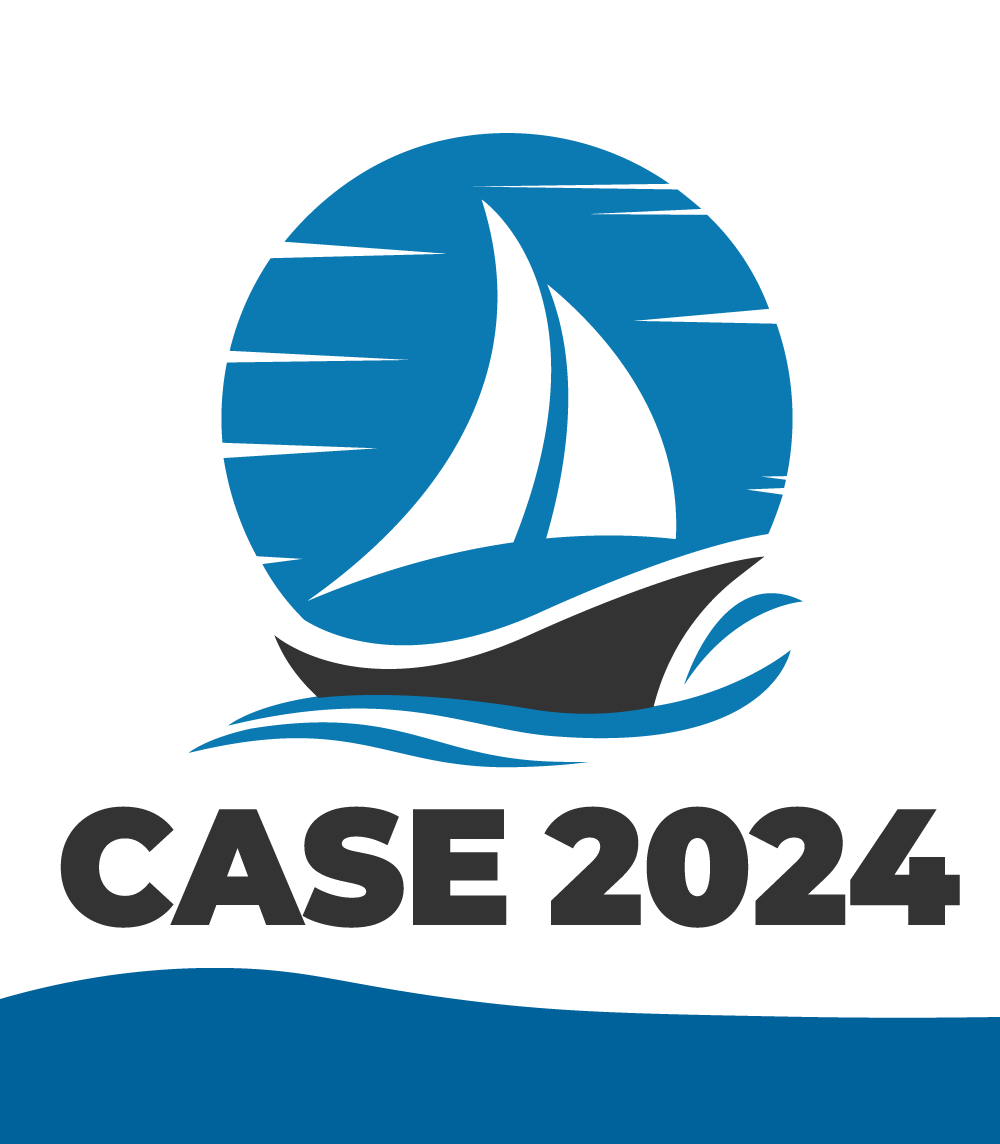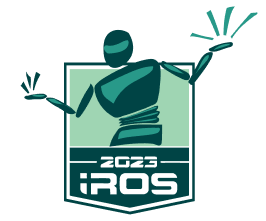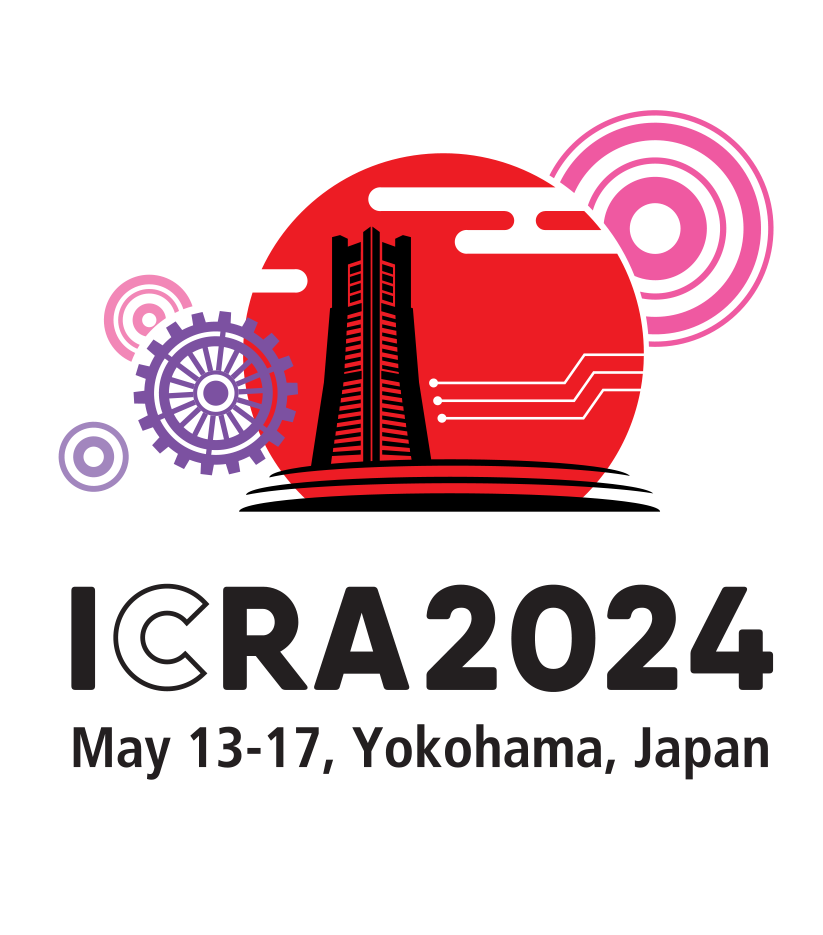RA-L Information for Associate Editors
Legend
RA-L: Robotics and Automation Letters
MS: Manuscript
SE: Senior Editor
AE: Associate Editor
EiC: Editor in Chief
DEiC: Deputy EiC
RE: Reviewer
SPC: Conference Senior Program Committee
RR: Revise and Resubmit
AP: Accepted for Publication
COI: Conflict of Interest
To volunteer to be an AE, please fill out this form and send your CV to the Editor-in-Chief
Generalities
The ambitious plan of RA-L implies that the Editorial Board has to perform extremely effectively: not only it will have to guarantee the highest standards of IEEE journals (with a complete peer review cycle, including revision and resubmission where appropriate), but it will also be subject to stringent deadlines. To make the Letters fly, RAS has appointed Associate Editors who are very strong scientifically but also very responsible and organized.
The term of an Associate Editor is one year, renewable once for two more years. Normally, an AE shall not serve two consecutive terms without a gap of approximately one year. An AE serves in an editorial area, supervised by a single SE and formed by a number of keywords, and provides reviews and recommendations for papers in that area.
The main responsibilities of an Associate Editor are
- To supervise the review process of papers in the sub-areas identified by keywords matching their own expertise
- To select reviewers for assigned papers, based on their scientific expertise and their reliability in providing timely and useful reviews
- To ensure the timeliness and quality of the review process, by sending reminders and interacting with reviewers as needed
- To make sure that at least two reviews of good quality are received within the deadline
- To personally assess the quality of the assigned papers, providing a commentary that builds on the reviewer’s comment and provides the AE’s own opinion
- To provide a recommendation for presentation at Conference (for Conference option papers)
- To provide a recommendation for publication, rejection, or a revise-and-resubmit process
- For resubmitted papers, to provide a recommendation for a final acceptance/rejection decision, possibly asking some of the previous reviewers to reassess the resubmission
To reach its goals, RA-L must guarantee a final decision within 6 months from submission, with no exceptions. In addition, for manuscripts with a Conference option, RA-L must guarantee a recommendation for Conference presentation within 3 months from submission. This will be possible following the timeline reported below.
The AE's service in handling a paper is acknowledged by the publisher (IEEE) including the name of the AE on the final electronically published paper.
RA-L Editorial Timeline
The schedule for a sampling of the conference options are shown below. Note that the day count is applicable to any RA-L submission, including those papers that are submitted to RA-L only (without a conference option). Most papers should progress through the review process faster than shown in this table -- the timeline show here gives the absolute latest deadlines.
| Time (days) | Duration (days) | Action |
| Day 0 | 0 |
Manuscript received. Submission Deadline |
| Day 7 | 7 | (Optional) Editorial reject of MS |
| Day 14 | 7 | (AEs assign MS to REs) At least three REs commit to review MS |
| Day 44 | 30 | (REs submit reviews) At least two good reviews per MS are received |
| Day 58 | 14 | (AE interacts with REs to improve reviews) AE submits recommendation |
| Day 72 | 14 | (SE interacts with AE) SEs endorses/revises AE recommendation |
| Day 86 | 14 | (EiC checks process) Authors receive reviews and RA-L recommendation |
| Day 100 | (14) | Authors of accepted MS submit final RA-L version |
| Day 116 | 30 | Authors of RR MS resubmit revised MS |
| Day 116 | - | MS re-assigned to SE and AE |
| Day 123 | 7 | AE re-assigns MS to REs (if needed) |
| Day 137 | 14 | REs submit the second review |
| Day 144 | 7 | AE submits the final recommendation |
| Day 148 | 4 | SE endorses/revises recommendation |
| Day 151 | 3 | (EiC checks process) Authors receive the final decision |
| Day 165 | 14 | Authors submit final files |
| Day 170 | 5 | Camera-ready version appears on Xplore |
| Day 180 | 10 | Absolute Final Publication Deadline |
The editorial spirit of RA-L
The general principle of the editorial work in RA-L is that editors and reviewers are not there to be inflexible judges; rather their role is to help authors write better papers.
This reflects in the review comments and recommendation reports, which are always constructive in their criticism, not just noting deficiencies but also indicating how they can be mended. Any diminishing or disrespectful remark must be absolutely avoided.
The quality level to be expected in a paper to appear in the RA-L is defined by the scope of the journal: a RA Letter is a timely and concise account of innovative research ideas and application results, reporting significant theoretical findings and application case studies in areas of robotics and automation.
By a loose analogy to existing publications, a Letter can be considered similar in quality to short papers in RAS T-RO or T-ASE, although the requirement of timeliness favours originality over maturity. In terms of a conference scale, we consider that a paper in the “A”, “B+” or "B" classes could become, possibly through a deep revision and resubmission process, a RA Letter. In some cases, a paper that in its first submission would be in the "B-" class can become a RA Letter, if the paper has the potential to be substantially improved in a revised and resubmitted version, capitalizing on comments and suggestions in the first review.
The RA-L Review process
The review process for RA-L is managed using the PaperPlaza system. PaperPlaza provides a wide variety of tools to help AEs manage the review process. Reviewer assignments, review entry, and AE reporting are all managed using PaperPlaza.
To access the system, go to the PaperPlaza page, click Start and then Log in. If you have forgotten your login information, you can retrieve it using the PIN management page.
It may be useful to spend a few minutes looking over the help pages, and in particular the Associate Editor's FAQ at the PaperPlaza Help Page.
Preliminary steps
Your action is started when a manuscript is assigned to you (day 0). This will happen in most cases by automatic assignment based on keyword matching.
The first step is to look at the MS to preliminarily assess its eligibility for RA-L review. If you deem that the MS is not suitable for RA-L or that you cannot supervise its review, please contact your area SE immediately to alert him/her and decide further action, e.g. editorial reject or reassignment. Notice that this preliminary evaluation phase should be as fast as possible, an in any case before a week (day 7).
Both editorial rejections and reassignments are to be used sparingly. Criteria for editorial rejection are discussed below in this document. You should ask a reassignment in case where you detect a COI that was not apparent (see below for a definition of COI for AEs). Requests of reassignment for lack of specific knowledge of the AE in the MS topic should be minimized. Indeed, you have been selected as AE not because of your deep competence in a narrow topic, rather for your experience, vision and capability to assess scientific contributions in a wider area - using the specific expertise of the reviewers you will select.
Reviewer Selection
Except for the exceptional cases of editorial rejection or reassignment, you can start considering choices for reviewers right away when you receive a MS (day 0). You have two weeks (until day 14) to make sure that at least three reviewers accept and commit to provide a review within the deadline (day 44).
Selecting appropriate reviewers is critical in order to have a quality and timely review process. Candidate reviewers may include leading researchers in the research area, colleagues who are familiar with the topic, authors of papers on the reference list, authors of relevant papers that have been previously published at RA-L, ICRA, IROS, CASE or in other high-profile journals and conferences.
A good mix of senior and junior reviewers is desirable as they provide reviews from different perspectives and at different levels of detail. A mix of reviewers from different geographical regions is also desirable.
Reviewers must have an adequate level of experience. The principle is to ask for a review only researchers who have already published in prestigious robotics Journals. A RA-L AE should not assign reviews to graduate students. Occasionally, a senior researcher may ask her/his students to help prepare a review assigned to her/him, but s/he needs to check carefully and endorse the review by personally clicking the "submit" button.
It is a good AE practice to consider as potential reviewers whom the AE knows directly, and to contact them directly to probe their availability even before sending the official Paperplaza invitation.
Needless to say, it is a poor and deprecated practice to invite a large number of reviewers through the Paperplaza system, hoping that some will accept the invitation. This leads to needlessly diffuse a confidential copy of the submitted paper that may well contain sensitive intellectual property. It is also counterproductive, as it annoys many colleagues, typically produces very few acceptances, and projects a very sloppy image of RA-L. Please do not invite more than 5-6 reviewers at a time.
A very nice new instrument to introduce RAS young members to the best practices in peer-reviewing of scientific papers is the Young Reviewers Program (YRP) . This is achieved by establishing a mentor-mentee relationship in which Senior Reviewers (SR) give reviewing assignments to the Junior Reviewers (JR) and oversee the review process. See more details how to use this instrument at
http://www.ieee-ras.org/publications/young-reviewers-program
Only one of the reviewers for each paper can be at the same institution as the AE for the paper. It is important that the reviews and the report for every submission come from at least three different Institutions.
An AE should not assign a review to her/himself: indeed, the AE report should provide an independent view and a critical discussion of the reviews. While it is not explicitly forbidden to ask other AEs to perform reviews, it is likely that they will decline, since they will be quite busy managing their own paper load.
A key idea to secure reviewers is to align the interest of reviewers with ours: the paper is on a topic that they would really like to see or to say something about. Having reviewers who are interested in going over the manuscript would alleviate the need of repeated sending of reminding messages, and avoid the need for AEs to write detailed comments themselves to supplement shallow and not-to-the-point reviews.
Review requests are handled by the PaperPlaza system. You begin by compiling your own list of reviewers. Follow the link Reviewers on your workspace page to do this.
Note: Please do not add new users to the system unless you are certain that they are not already registered. Multiple PINs for a single user can cause significant difficulty and confusion.
After you have compiled your list of reviewers, a review can be requested by following the Reviews link for a submission, then clicking the Request a review link. You may edit the standard form letter as you please. You must click Send to actually generate the e-mail invitation to the reviewer.
Vetting reviews and preparing the AE Report
RA-L has a strict review quality policy: every submitted paper must receive at least two substantial reviews, and an informed AE Report before two months from submission (more precisely, by day 58).
The AE should address any sub-standard review he receives - e.g., too short or shallow. In this case, the reviewer should be asked to improve the review. If the reviewer does not improve the review, a good-quality review should be obtained from an additional reviewer in order to ensure at least two high-quality reviews for the paper. If a sub-standard review is not improved, or if it is discovered to involve a conflict of interest, the AE and SE may provide guidance to an author regarding how to interpret (or even disregard) the review – but the review must still be provided to the author. It is also the AE's responsibility to see that reviews are constructive and not diminishing the authors' efforts, even when they have to be very negative.
Once you have collected all reviews, you should prepare and submit your AE report. In your report, you should briefly summarize the reviews (please avoid copying excerpts of the reviews in your report, as authors will see the reviews integrally), state your own opinion on the paper, and note any special circumstances that may apply. If reviews are not clear enough, the AE Report should give a solid rationale for the decision to be made. If the reviews disagree, please do not merely give the average as your rating. As AE, your responsibility is to take decisive action and settle the conflict.
The text part of your report will be used by the Senior Editor to prepare the final report sent to the authors: in this text, please do not indicate the decision you recommend, but only the motivations for your recommendation. You will give a recommended score, which is not visible to the authors. In some cases, the Senior Editor (and/or the Senior Program Committee for papers with a Conference option) may change the recommended decision, and we want to avoid confusing the authors.
Note that once you have submitted your AE report, no further reviews can be obtained or entered into the system. When you submit your report, all pending reviews are cancelled automatically. If you made a mistake or anyway need to change the report, you must ask the SE to reopen the paper.
Upon reception of your Report, the SE and EiC will consider it for endorsement or will interact with you to request clarifications, suggest changes or improvements. This phase will last at most two weeks (day 86 from submission) and will be concluded by sending the reviews and RA-L recommendation to authors.
Revised and resubmitted manuscripts
If the decision on first submission to RA-L is RR, authors will be asked to resubmit a revised version and a Statement of Changes within one month (day 116). The MS will be immediately re-assigned to you, the managing AE.
Upon reception of the revised version, you will decide whether you need the assistance of one or more of the original reviewers to re-assess the MS. This should not be considered a default, and only be done if you do not feel like deciding yourself on the new recommendation. If you do ask a RE to re-review the MS, you must do this within a week from resubmission (day 123) and the RE will have to provide his/her opinion within two weeks (day 137).
You must provide your second recommendation within a month from resubmission (day 144). The second recommendation is also the final one for RA-L and can only be an Accept for Publication or a Reject. A final decision dossier has to be prepared by the AE, including an AE report, all second reviews (if any), and the final decision recommendation. Upon interaction with the SE and EiC for endorsement or possible changes, the recommendation becomes final and is communicated to authors (day 151).
The schedule described above is to be considered strict. Indeed, considering the time need after the final recommendation by authors to submit their final version, and technical publication times, very little slack is available before the absolute final deadline of 180 days from submission to e-publication.
When the final version of an Accepted paper is received, the Senior Editor has the possibility to verify that all required changes have been made in the final version, and s/he may request the AE to support in this phase also. Although rarely, a SE can withhold publication until all required changes are satisfactorily made. In case this can not be achieved by authors within 180 days from submission, which we set as a time limit for publication of Letters, the paper could be effectively withdrawn from publication.
Editorial (Summary) Rejections
AEs who believe a paper assigned to them should be summarily rejected inform the SE who makes the decision. The SE assigned to the paper makes the final decision as to whether the paper should be rejected without further review, or should go through the regular review process. Senior Editors should notify the EiC of the editorial rejections they propose and their rationale no later than one week from the submission.
Editorial rejects are to be used mainly for incomplete or otherwise clearly unsuitable papers (see below the official IEEE policy for more details). An editorial reject by an AE or SE solely based on technical grounds (e.g., paper is not strong enough, or it is of limited relevance to RA-L) is not appropriate: IEEE rules require that at least three persons concur in such a decision. For these cases, the EiC and at least two members of the Editorial board have to consent. The recommended decision on such a paper should be “Unsuitable” (not “Reject"), and the decision should not be executed until a draft of the publication decision has been approved by the EiC.
Editorial rejections have to be argued carefully. A non-specific, boilerplate letter will cause frustration in the authors. When in doubt, the paper should be sent for regular review. We expect that no more that 10-15% of submitted papers will be rejected without review.
IEEE Policy Regarding Prescreening of Articles by Editors
Editors may prescreen articles immediately after they are submitted and before they are transmitted to referees for evaluation. The purpose of such prescreening is to verify that the article adheres to minimum criteria set forth by IEEE, as well as by the organizational unit responsible for the specific publication. Typical prescreening measures include the following:
- The author(s) have followed the IEEE guidelines for style.
- The author(s) have not obviously violated IEEE Policies.
- The article is comprehensible (in other words, not so poorly written that it is unreadable).
- The subject and contents of the article meet the scope of the periodical or a specific issue.
- The article meets a minimum criterion for technical substance established for the periodical.
If the Editor assesses that a submission has met prescreening criteria 3.a through 3.d, but has not met criterion 3.e, the Editor shall consult with at least two members of the editorial board for concurrence. Rejection on the basis of criterion 3.e requires the agreement of the Editor-in-chief, the Senior Editor, and the Associate Editor. An article is considered in review if it passes the prescreening process and is forwarded to referees. An “administrative reject” refers to an article that does not meet the prescreening measures and is, therefore, returned to the author(s) with explanation.
Conflicts of Interest
A RA-L AE is deemed to have a conflict of interest in a submitted MS if one (or more) of the authors
- is, or has been, a student (including postdoc) or advisor of the AE, or
- has co-authored a paper or has closely collaborated in a research project with the AE in the previous five years, or
- is employed at the same institution (at the Department or Division level) as the AE, or
- there are any other circumstances which may create an appearance that the person might have a bias in the evaluation of the paper.
The criteria for COIs for RA-L AEs also apply to RA-L reviewers.







